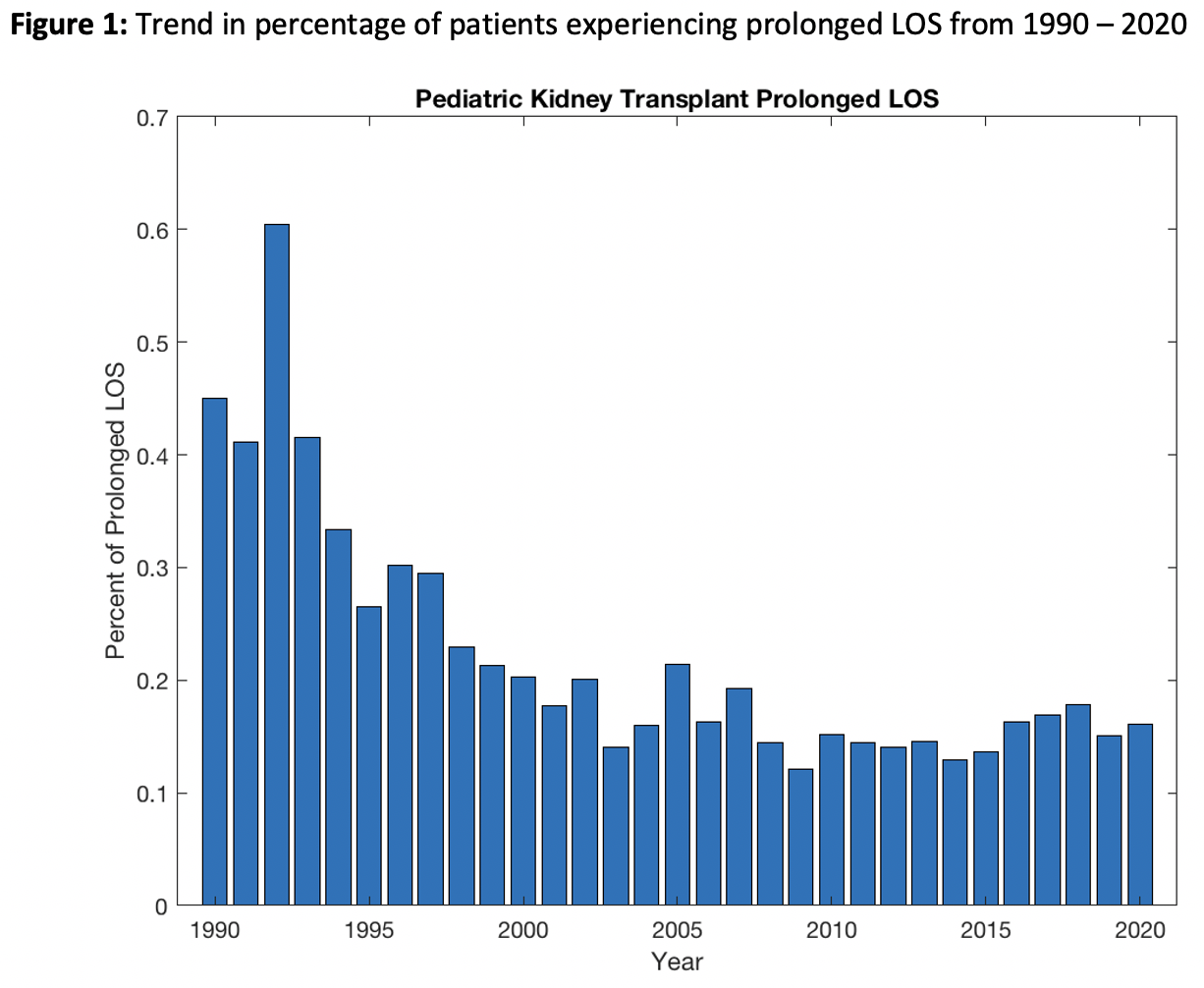Predictors of Prolonged Length of Stay in Pediatric Kidney Transplantation: Changes Over the Last Three Decades
Department of Abdominal Transplantation, Baylor College of Medicine, Houston, TX
Meeting: 2021 American Transplant Congress
Abstract number: 1013
Keywords: Kidney transplantation, Length of stay, Pediatric, Waiting lists
Topic: Clinical Science » Kidney » Kidney: Pediatrics
Session Information
Session Name: Kidney: Pediatrics
Session Type: Poster Abstract
Session Date & Time: None. Available on demand.
Location: Virtual
*Purpose: Hospital length of stay (LOS) following kidney transplantation, particularly prolonged LOS, has not shown much improvement since the early 2000s. This study explores changes in risk factors for prolonged pediatric LOS over the last 3 decades.
*Methods: The UNOS database was queried for pediatric (age<18) kidney transplants between 1990 and 2020. Multivisceral transplants, retransplants, and living donor transplants were excluded and the final sample was 8229 patients. Risk factors for prolonged LOS were analyzed by decade using univariate logistic regression and those which were significant (α=0.05) were entered into a multivariate logistic regression analysis.
*Results: Over the last 3 decades (Figure 1), recipient age has become an increasingly significant protective factor against prolonged length of stay. While dialysis during the waitlist period has become an increasingly significant risk factor for prolonged LOS, dialysis at time of transplant has become nonsignificant in the recent decade. Additionally in the recent decade, low recipient functional status (20%), African American or Asian ethnicity, and spending more than 1 year on the waiting list have become significant recipient risk factors for prolonged LOS. In contrast, having private insurance, autoimmune disease diagnosis, shortened cold ischemic time, high BMI, and being a dropout from school have become protective against prolonged length of stay (Table 1).
*Conclusions: These findings suggest some improvements in pediatric kidney transplantation over the 3 decades, as shorter cold ischemic times are associated with shorter length of stay. Being on dialysis at time of transplant is no longer a significant risk factor for patients, which may suggest transplantation of healthier patients overall. Additionally, adolescents are possibly being discharged earlier with increasing confidence. However, waitlist time of more than 1 yr and dialysis during the waitlist period has become an increased risk factor, which may suggest longer waitlist times in recent years with more patients on dialysis becoming ill. This may explain the lack of improvement in prolonged LOS from 2000-2020.
To cite this abstract in AMA style:
Goli K, Galvan NT, Cotton RT, Goss JA, O'Mahony CA, Rana A. Predictors of Prolonged Length of Stay in Pediatric Kidney Transplantation: Changes Over the Last Three Decades [abstract]. Am J Transplant. 2021; 21 (suppl 3). https://atcmeetingabstracts.com/abstract/predictors-of-prolonged-length-of-stay-in-pediatric-kidney-transplantation-changes-over-the-last-three-decades/. Accessed December 28, 2025.« Back to 2021 American Transplant Congress


